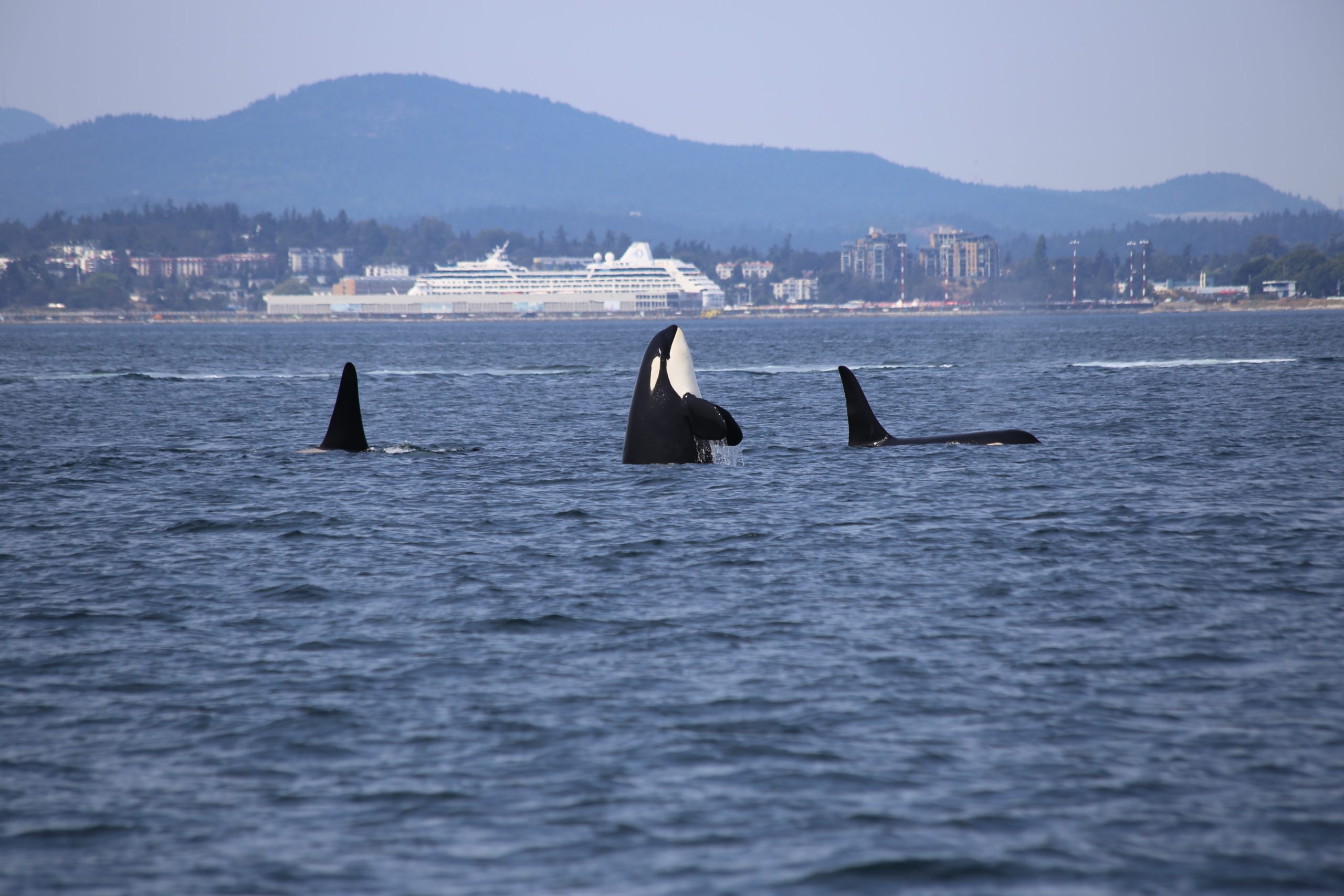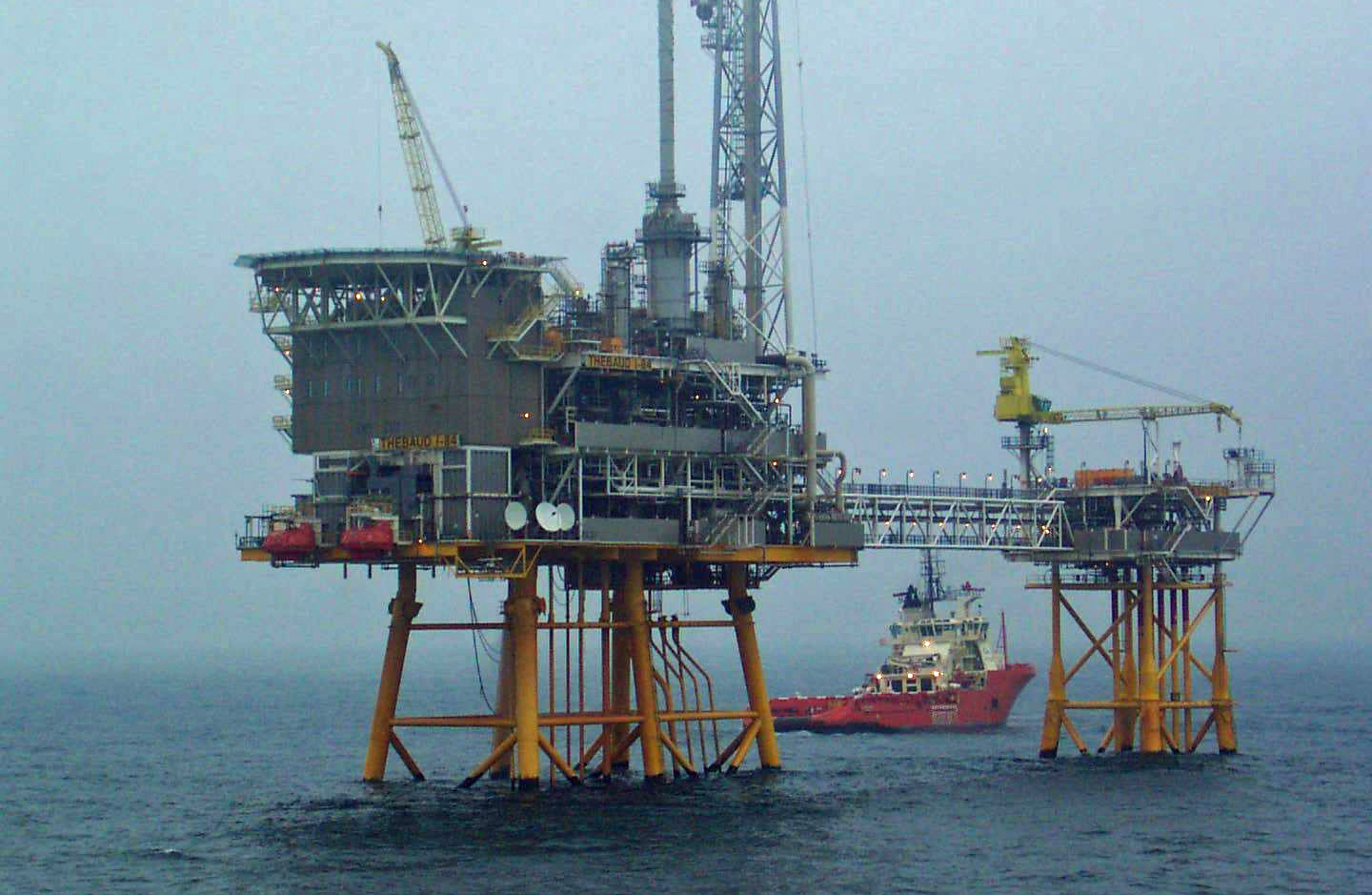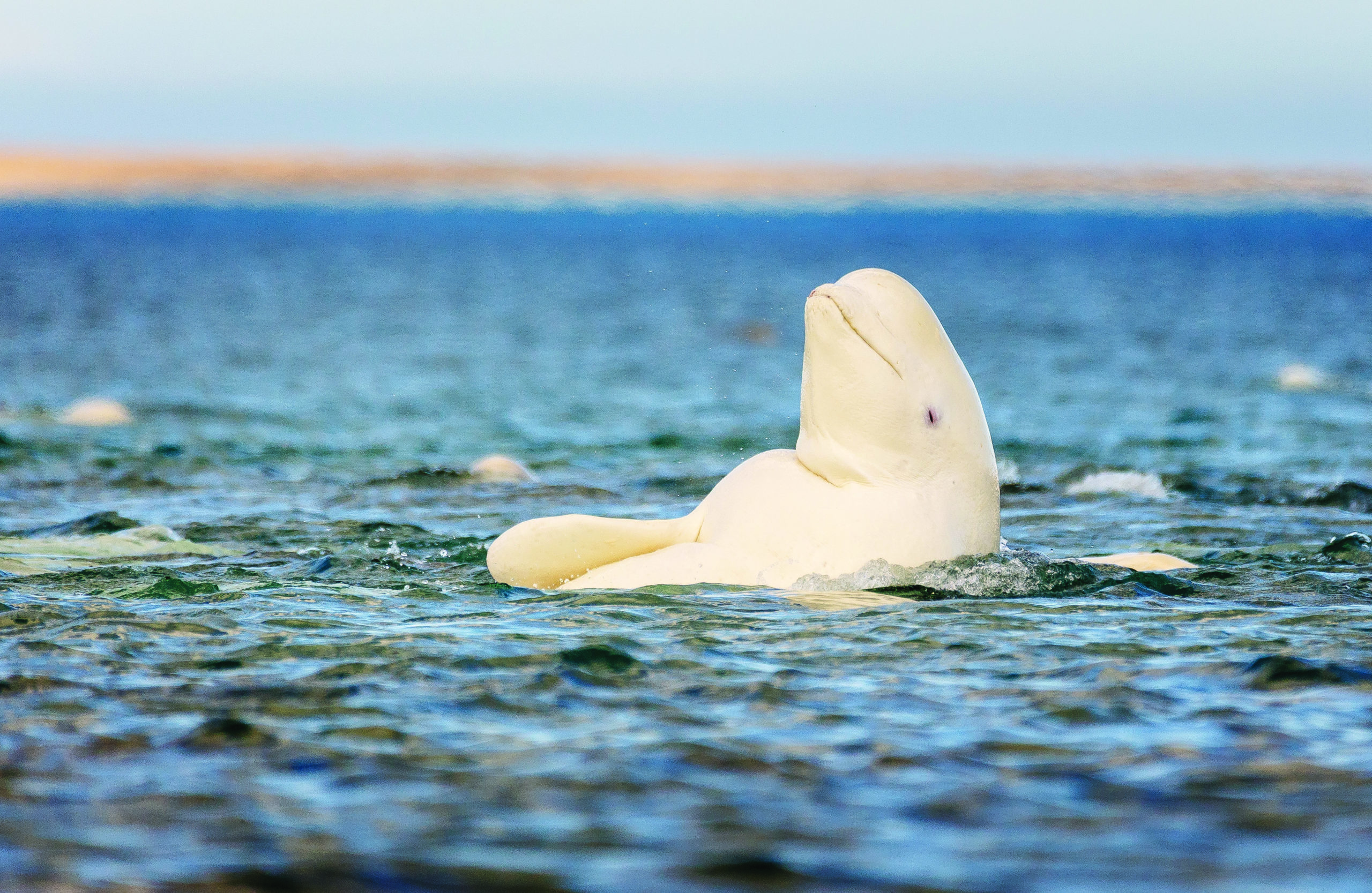Turning down the volume on ocean noise pollution
Ever been awakened by loud construction? Or been unable to concentrate because your neighbour won’t turn down their audio system? Believe it or not, it could be worse: if you were under water, sound travels nearly five times faster than in air, covering vast distances with little loss of intensity.
For marine soundscapes, this means that noise radiating from human activities reverberates through the water column with astonishing clarity and severity. The continuous rumble of a distant ship’s engine or the rotation of propellers can travel several kilometres, essentially competing with the natural sounds of the species that call these waters home.

The volume from human-made underwater noise is about to increase substantially, and it’s time to do something about it.
With oil now flowing through the Trans Mountain pipeline, the first tanker departed last month to kick off an expected tripling of oil tanker traffic in the Salish Sea. Up on British Columbia’s north coast, the LNG Canada liquefied natural gas terminal in Kitimat is approaching completion—tankers should start traversing the Great Bear Sea in mid-2025, sending 350 more massive vessels annually across this still-quiet home to at-risk humpbacks and fin whales.
Some noise is inevitable, of course, but like you, every animal has a biological limit to the type and intensity of noise it can handle before impacting its health and survival. There’s a reason why noise is a recognized form of torture. When underwater noise surpasses that limit and becomes noise pollution, the effects are widespread and severe, endangering whales, seals, fish, invertebrates, and even coral reefs.
Underwater noise pollution interferes with communication, navigation, mating, feeding, and overall behaviour of marine species, which can lead to stress, displacement, injury, and even death. The growing chorus of underwater noise also increases the risk of fatal ship strikes and strandings of whales, which have become increasingly prevalent in Canadian waters.

What’s causing this dramatic increase in underwater noise? The dominant source of human-made underwater noise is from marine traffic. Large and small vessels alike make noise, but the threat is particularly acute from commercial shipping, including tankers, container vessels, bulk cargo vessels, cruise ships, and tugs. Other sources of human-generated underwater noise include marine construction, seismic exploration blasting, and offshore oil and gas and renewable energy installations.
With ports rapidly expanding, shipping increasing to meet growing consumer demand, and tourism reaching increasingly remote areas, including the once-quiet Arctic, the threat underwater noise poses to wildlife is set to increase exponentially, causing ever more profound adverse effects.
One of Canada’s most iconic and endangered whale populations, the southern resident killer whale, now numbers only 74 animals. Designated under the Species at Risk Act as endangered, and assessed by the government as facing imminent threats to its recovery, these orca continue to have their critical habitat degraded with increasing levels of noise pollution from the continued growth in shipping traffic from industrial projects in the Salish Sea.
But it doesn’t have to be this way. By leveraging quieter technology and setting underwater noise pollution limits based on scientific, Indigenous, and local knowledge about marine species, their habitats, and how noise impacts them, we can achieve significant protections without disrupting our economy.

Canada has been at the forefront of this emerging issue on the world stage, notably through its leadership at the International Maritime Organization where they’ve been pushing for stronger guidelines because the current ones are “too vague.” And yet, Canada’s own domestic efforts on this front, the Ocean Noise Strategy, is already three years delayed.
The threat of underwater noise pollution will continue rising without government action, as will its negative impact on marine biodiversity. And this is also a matter of economic and social importance, given coastal communities’ reliance on healthy oceans for food security, livelihoods, and cultural heritage.
Canada has an opportunity to reaffirm its commitment to marine conservation by prioritizing the timely release and implementation of its Ocean Noise Strategy. By doing so, we also set a positive example for other nations, fostering international co-operation in safeguarding our oceans for future generations.
But with commercial shipping increasing dramatically even before B.C.’s impending surge of tanker traffic and climate change opening new trade routes in the Arctic, we must take action against underwater noise pollution now—before it’s too late.
This opinion piece was originally published in The Hill Times

